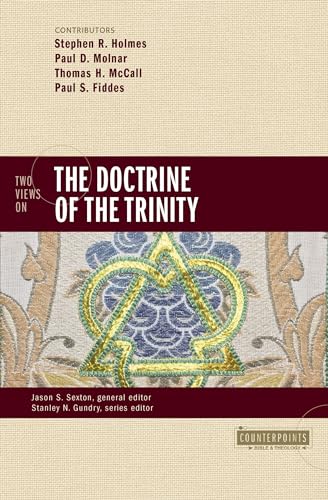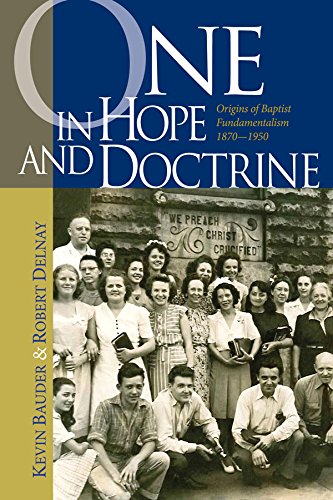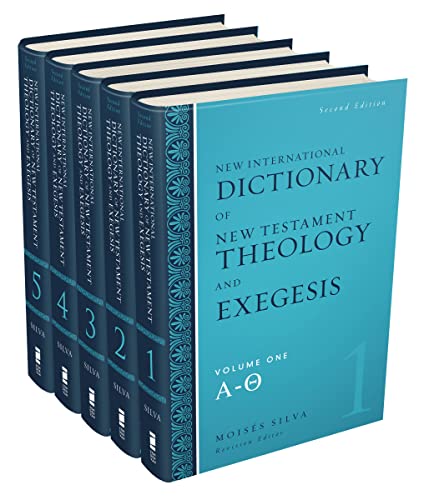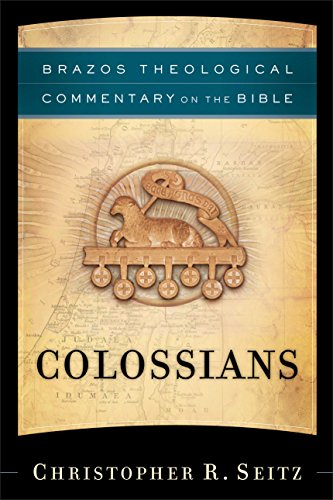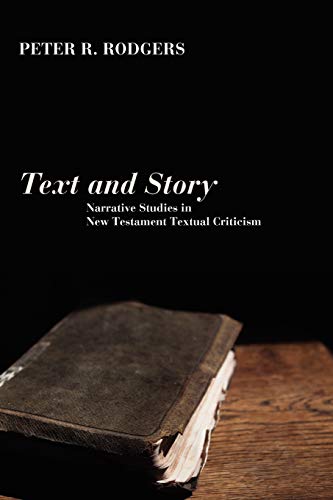Race: A Theological Account
Written by J. Kameron Carter Reviewed By Elizabeth Y. SungCarter (Associate Professor of Systematic Theology and Black Church Studies at Duke Divinity School) asserts: “The . . . modern problem of imagining the human being in racial terms, and within these terms positioning whiteness as supreme [is] a central ideological component in constructing the modern world as we have come to know it. The racial imagination arose inside of . . . and even camouflaged itself within the discourse of theology” (p. 12). His study promises to narrate the theological origins of “race” discourse. Since “race” has compromised Christian theology, Carter proposes an alternate course for its future.
The Prelude outlines certain features of Irenaean Christology. The Gnostics’ Christ, lacking “Jewish flesh,” allows for a “hierarchy of [human] essences” (p. 35). Irenaeus “reclaims Christ’s humanity as made concrete in his Jewish flesh as a central feature of both Christian identity and the theological imagination” (p. 7), a trait shared by “antebellum Afro-Christian” writers (p. 7).
Part I sketches a genealogy of “race” discourse, a modern reimagining of human identities promoting “white cultural supremacy” (p. 12) to legitimate European hegemony. The “perennial though increasingly invisible theological problem of our times is not race in general but whiteness in particular” (p. 372), where “‘white’ and . . . ‘black’ . . . are not merely signifiers of pigmentation . . . [but] signify a political economy” (p. 8).
Carter argues that Kant is the first to articulate “race” in theoretical form: it appears in early essays on anthropology contrasting the superior capacities of “whites” to non-whites, and in the later writings on political economy. In the latter, Kant uses “Christian supersessionism” (p. 7) to sever the Christian faith from Judaism and recast Europeans as the owner-proprietors of “the supreme rational religion” (p. 82) destined to rule the world.
Part II interacts with African American religious scholarship: James Cone, Albert Raboteau and Charles Long. While much is appreciated, these works are (a) misguided in constructing self-contained “racial/cultural” identities that—like white identity—are incapable of mutuality and (b) reductionistic regarding the theological convictions of early Afro-Christian writers: a “reperformance of the master’s religion” that interrupts “modernity’s enslaving narrative of civil or cosmopolitical religiosity” (p. 227).
“Interlude on Christology and Race” reflects on Gregory of Nyssa’s reasoning about slavery, rendering him “an ancient theological abolitionist” (p. 7) contrasted with the toleration of Basil, Nazianzen, and Augustine. Nyssen “read[s] against rather than with the social order” because of “his complex Christological understanding of the image of God” (p. 233), a pattern also to be seen in “New World Afro-Christianity” (p. 7).
Part III is Carter’s constructive response to “the theological problem of whiteness,” primarily in commentary on autobiographical accounts by antebellum Afro-Christian writers in the U.S. The theological reflections of Briton Hammon, Frederick Douglass, and Jarena Lee resist dominant whites’ dehumanizing construction of blackness and slavery on the basis of their dignity and freedom in Christ. Excerpts from Nyssen and Maximus the Confessor show a shared “Christological sensibility” (pp. 7–8).
Carter frames the theological solution to “race” as follows: “success in destabilizing race as a founding and grounding category of existence is tied to how one imagines the person of Jesus Christ” (p. 256). He writes:
Christ’s life . . . restores the image-status of all persons, affirming and positioning all persons in the person of the eternal Christ, the Son of the Trinity, so as to set them free. . . . In so doing, they take up the theological mandate . . . [to] exit the power structure of whiteness and of the blackness (and other modalities of race) that whiteness created, recognizing that all persons are unique and irreplaceable inflections or articulations . . . of Christ the covenantal Jew, who is the Image of God, the prototype, and who as such is the fundamental articulation, through the Spirit of God, of YHWH the God of Israel, the one whom Jesus called Father. . . . To exist in Christ is to be drawn into [a covenantal] understanding of identity, into the ecstatic and eschatological identity of Israel’s covenantal promises. But it is just such a mode of existence that yields freedom . . . free[ing] all beings to be unique articulations of Christ the Image, the prototype, so that together human beings across space and time might constitute a jazz ensemble that riffs upon and improvises within the eternal Word. (pp. 250–51)
The Epilogue addresses the question: “What kind of discourse should theology be?” Race is an ideological discourse that systematically privileges whiteness, spawning, in reaction, other forms of “possessive self-love” (p. 348). Because “whiteness continues to reign as the inner architecture of modern theology and . . . function[s] as a discourse of death” (p. 377), Carter warns that Christian theology faces loss of credibility among those it marginalizes.
Thus, theologians are directed to “exit whiteness and the identities whiteness creates” (p. 366). Instead they should choose theological engagement with those “on the underside of modernity” (p. 374) as a way forward in “narrating being beyond race” (p. 378).
This monograph breaks new ground, beginning with construing “race” as a theological problem. The argument is made by ascribing the invention of race to Kant (not itself a new claim: Robert Bernasconi, “Who Invented the Concept of Race? Kant’s Role in the Enlightenment Construction of Race,” in Race, ed. Robert Bernasconi [Oxford: Blackwell, 2001], 11–36), by showing that Kantian thought is conditioned by Christian categories (especially supersessionism), and by tracing, in several writings, the theme of white superiority. Carter’s compelling interpretation calls for revision of the ordinarily positive assessment of Kant’s view of humanity.
The study also is original in its interaction with postmodern theorizing and cultural criticism, contemporary black theology and black religious scholarship, and historical theology (patristic and antebellum African American writers). Carter’s broad knowledge and facility in drawing comparisons and distinctions between past and present thought-patterns is impressive.
Carter’s analysis of texts otherwise unknown to many theologians, highlighting the counterhegemonic use of Christological reasoning in reflection by Afro-Christian U.S. writers, is valuable. They bear out his larger argument that theologians neglect such works by non-white writers, to their detriment.
Several questions arise relative to the framing of the subject of “race” by this study. The first matter concerns methodology. It is highly debatable that original authorship of modern racial ideology can be ascribed to Kant; thus, the claim that racial logic is inherently theological pertains specifically to him. Racial logic took diverse forms in different locales in Europe and European colonies (Ivan Hannaford, Race: The History of an Idea in the West [Baltimore: Johns Hopkins University Press, 1996]). I argue in a forthcoming book that not Kant but French philosophers influenced the formation of racial beliefs in the U.S. (the setting of Hammon, Douglass, and Lee); in this discourse, an alternate retelling of the story of Christianity in which European Christians replace the Jewish people as the elect simply does not figure.
Second, the title of Carter’s study—Race: A Theological Account—suggests a comprehensive analysis of “race” theory. However, the actual scope and focus is much more specific. The conceptualization of black identity, over against “the theological problem of whiteness” is thematized; other racialized identities are not treated.
Relatedly, what Carter criticizes is the ideological character of “race.” While he accomplishes this aim admirably—especially in highlighting what is unspoken or “invisible” in “race” discourse, i.e., the advantaged position conferred upon whiteness in a racialized system—this level of analysis does not dismantle the notion of “races” as such.
Fourth, “race” first pertains to a fallacious classificatory scheme applied to human beings. Carter’s solution highlights the Christological resources available for a theological reconstruction of personal identity. However, while the insights are relevant for self-identified Christians, his description of the implications of Christology evinces some ambiguity: “Christ’s life . . . restores the image-status of all persons, affirming and positioning all persons in the person of the eternal Christ, the Son of the Trinity, so as to set them free” (p. 250, emphasis added). “To exist in Christ is to be drawn into . . . the ecstatic and eschatological identity of Israel’s covenantal promises . . . a mode of existence . . . that frees all beings to be unique articulations of Christ the Image . . . riff[ing] upon and improvis[ing] within the eternal Word” (p. 251, emphasis added). However, such statements runs counter to the NT description of what it is to be “in Christ” (Rom 8:1–17; cf. Rom 6:1–15), which is contingent upon placing personal belief and trust in the Son (John 1:12–13; Eph 1:13). To avoid conflating anthropology and soteriology, further qualification of these matters is crucial.
Following Scriptural logic might lead one to inquire, rather, whether there is some other sense in which all persons might be released from essentially erroneous racial interpretation. In my own work, I offer a deconstruction of “race” and argue for an alternate paradigm that is empirically valid and pertains to theological anthropology, Christology, soteriology and ecclesiology.
Thus, Carter’s monograph might be more aptly retitled: “Whiteness” in Kantian Thought and an Antebellum Afro-Christian Christological Reconstruction of “Blackness,” with Implications for the Future of Christian Theology. This erudite study repays patient, resolute reading, especially in conjunction with Willie Jennings’s The Christian Imagination (New Haven: Yale University Press, 2011, reviewed in Them 39.3 [2014]: 585–88). The latter volume postdates Carter’s, but further elaborates various aspects of the framework they share as academic colleagues. Highly recommended.
Elizabeth Y. Sung
Elizabeth Y. Sung
Trinity Evangelical Divinity School
Deerfield, Illinois, USA
Other Articles in this Issue
The account of Abraham's near-sacrifice of Isaac has been and will likely continue to be violently applied so long as the dominant misunderstanding of the text prevails...
In recent years, a growing cadre of younger historians has begun publishing significant books on the history of American evangelicalism...
Romans 4 remains a central text in the debate over the New Perspective on Paul...
Within the intra-Reformed debate over baptism, covenant theology is a crucial aspect in determining one's position...
‘Fathers of Faith, My Fathers Now!’: On Abraham, Covenant, and the Theology of Paedobaptism
by David GibsonThe figure of Abraham creates a covenantal framework for biblical theology that allows baptism to be considered in relation to the Bible's developing story line...



